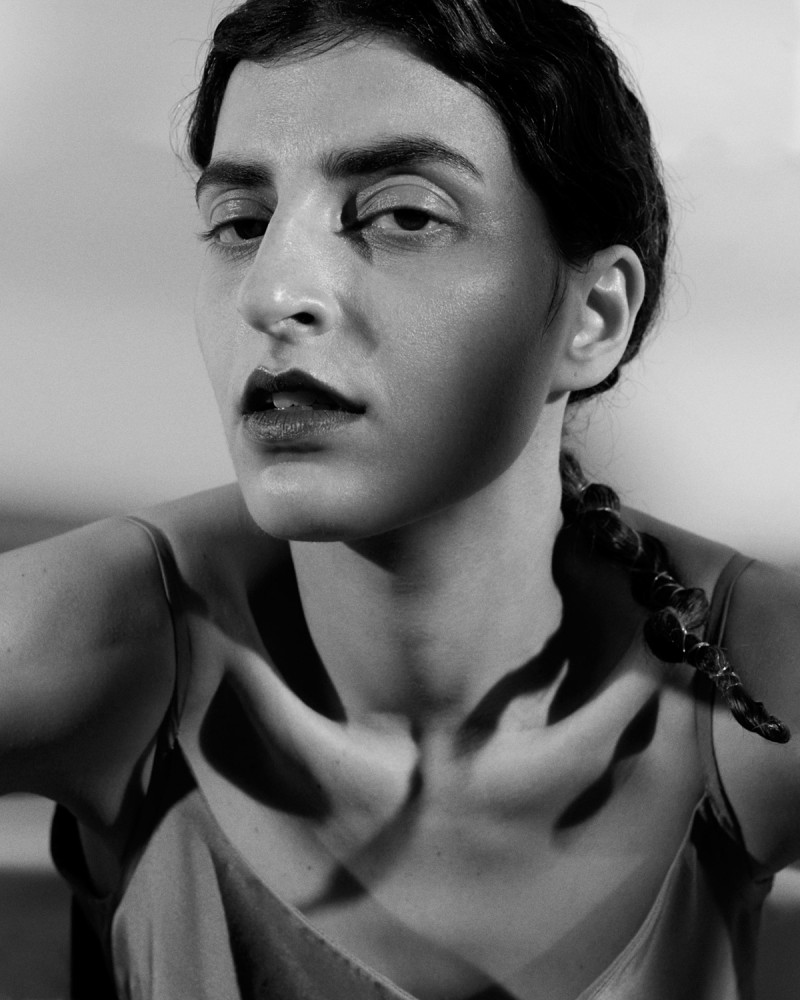
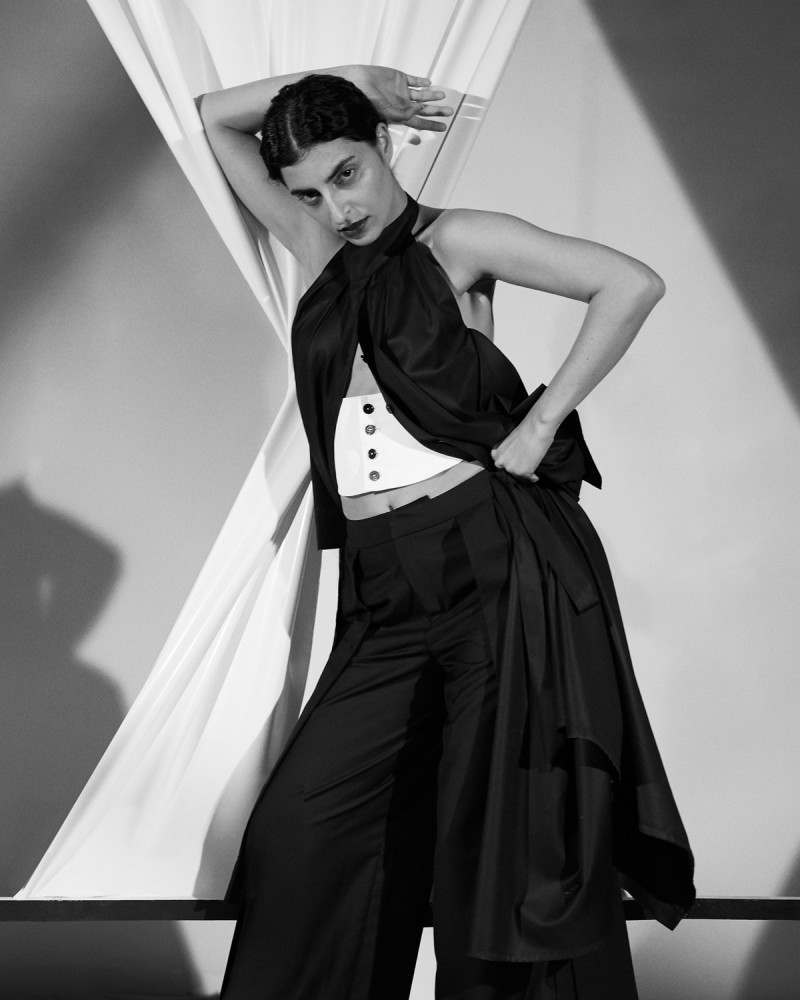
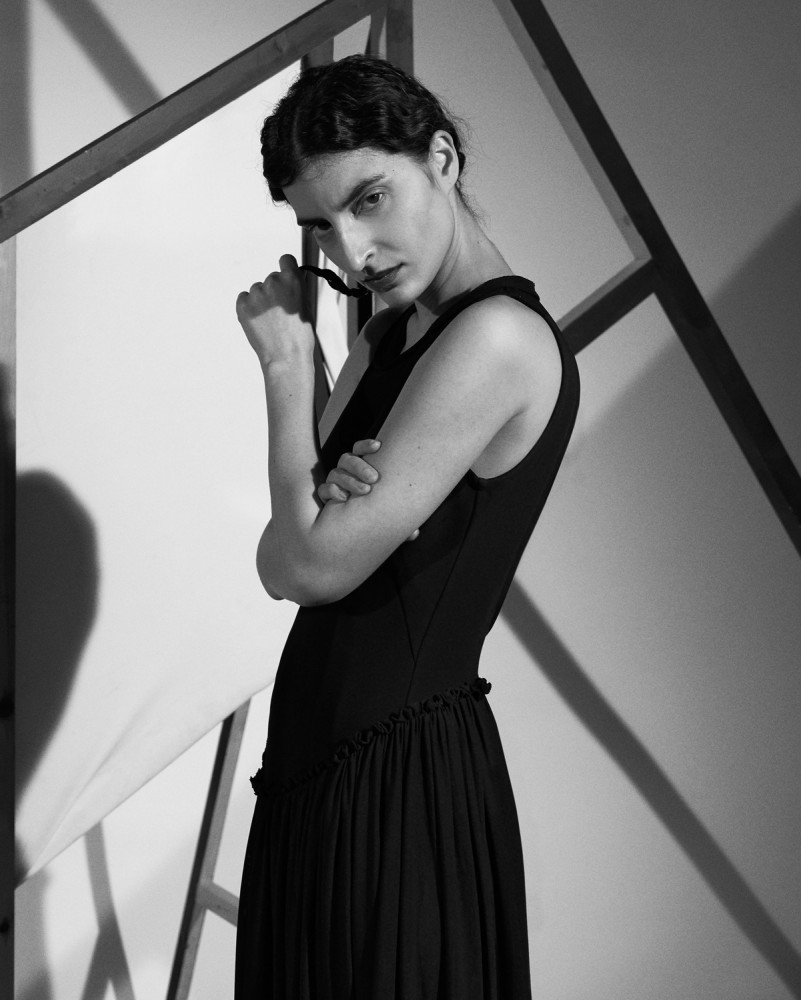
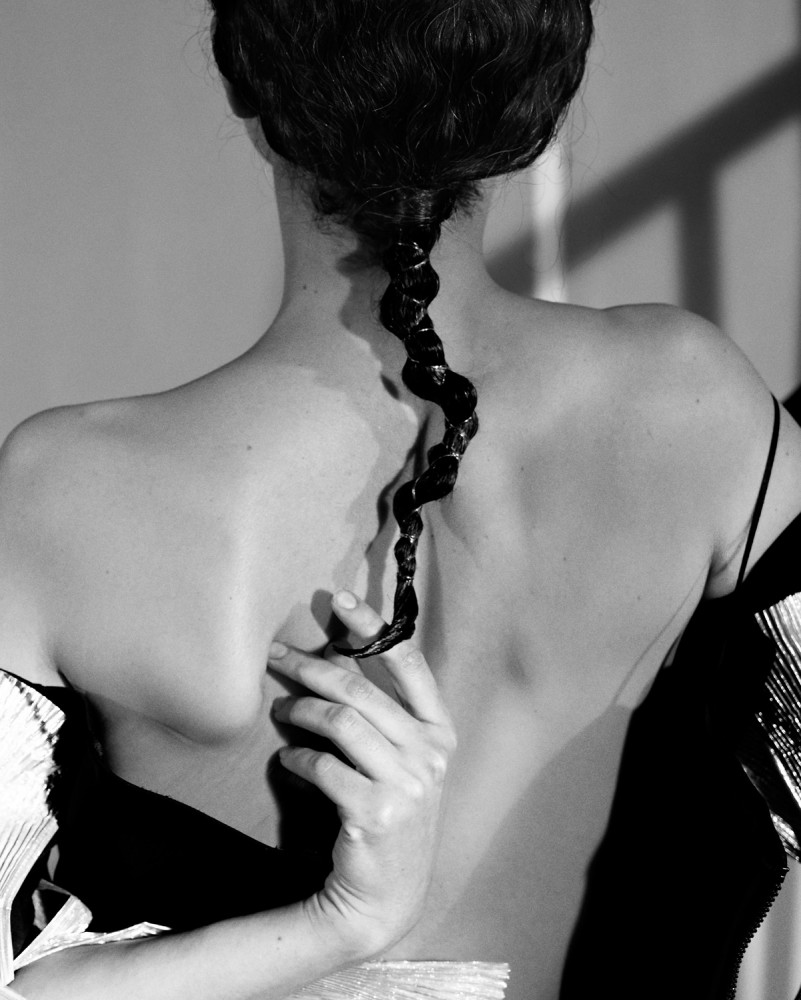
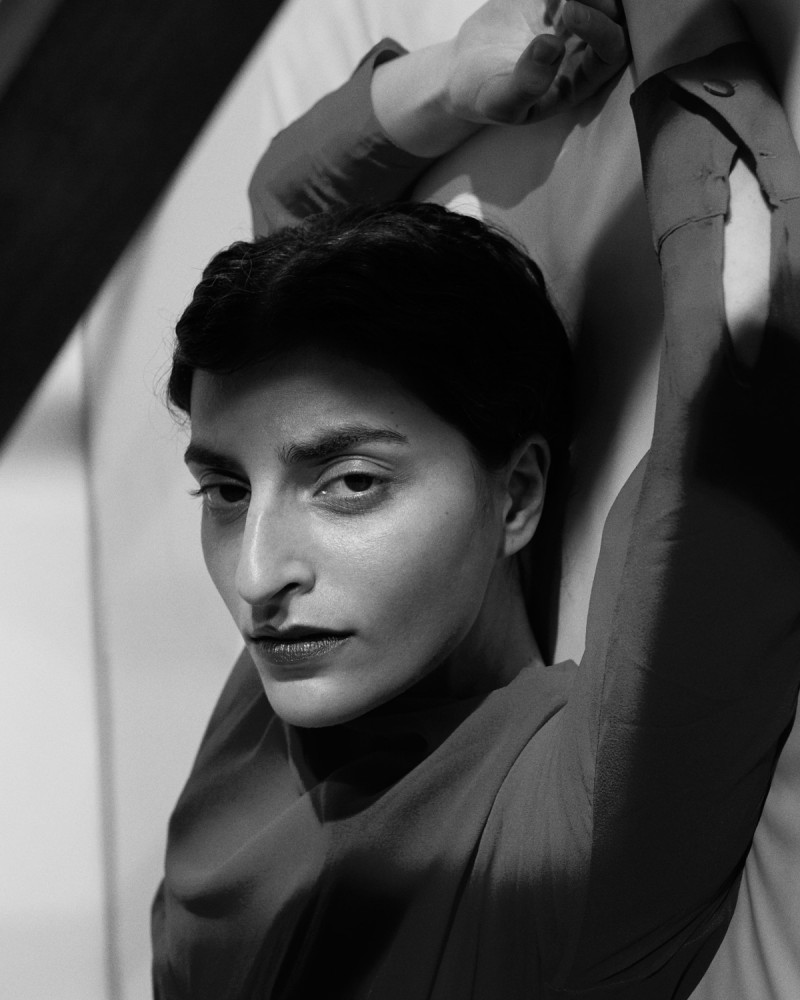
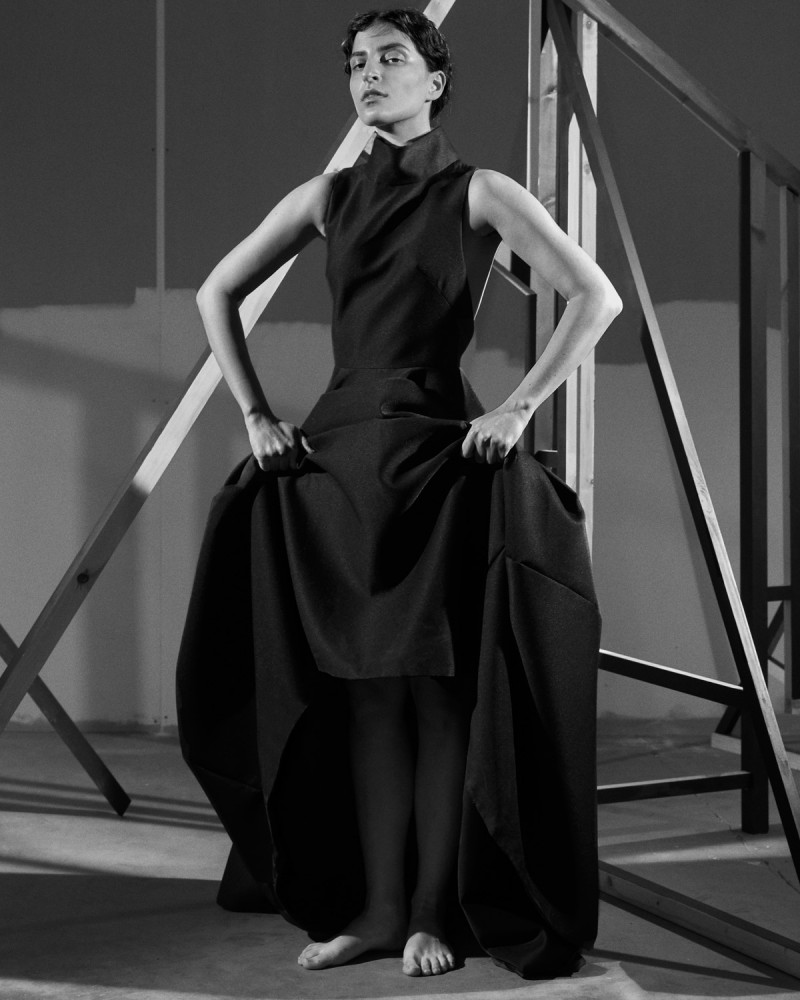
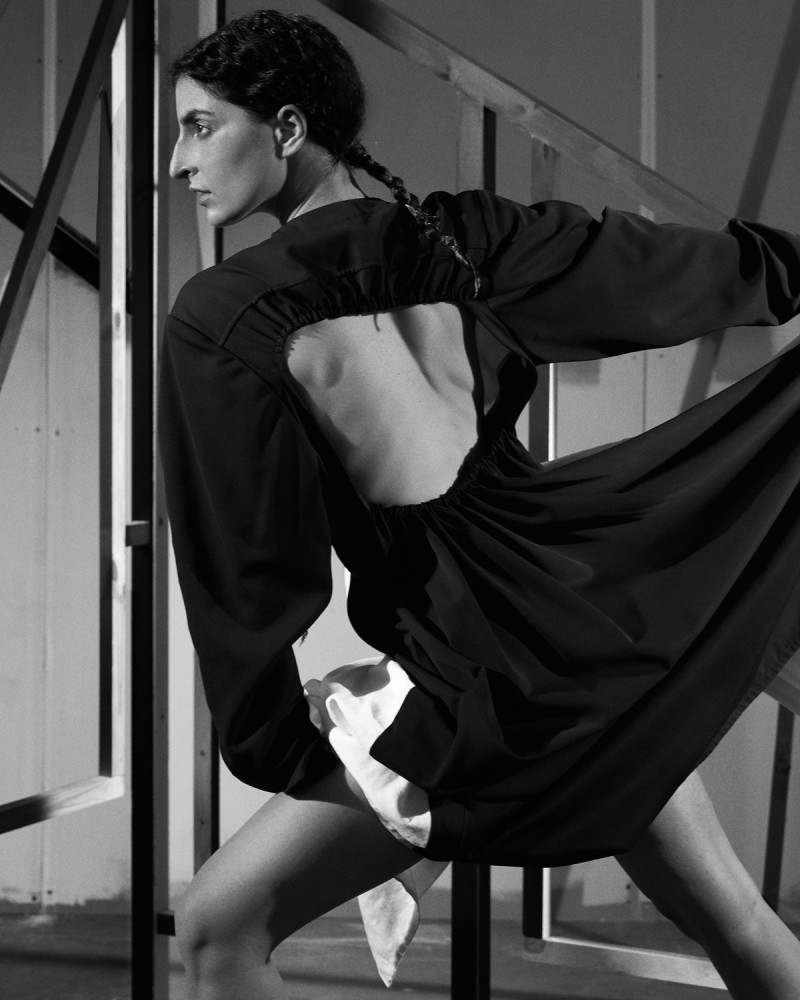
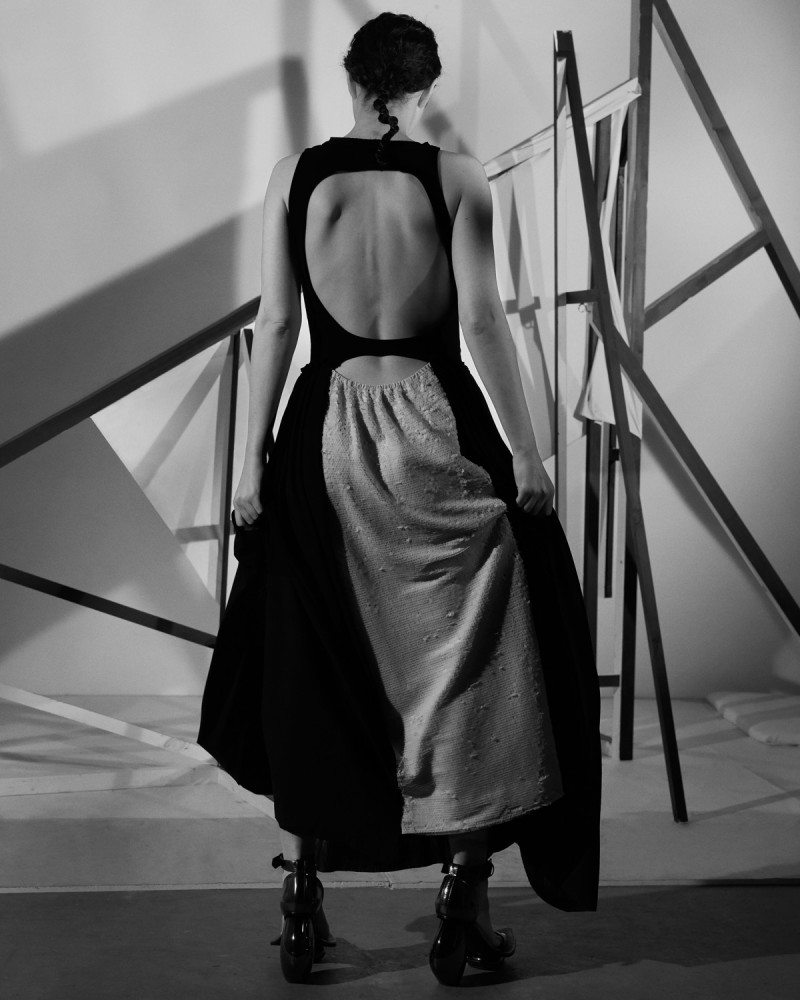
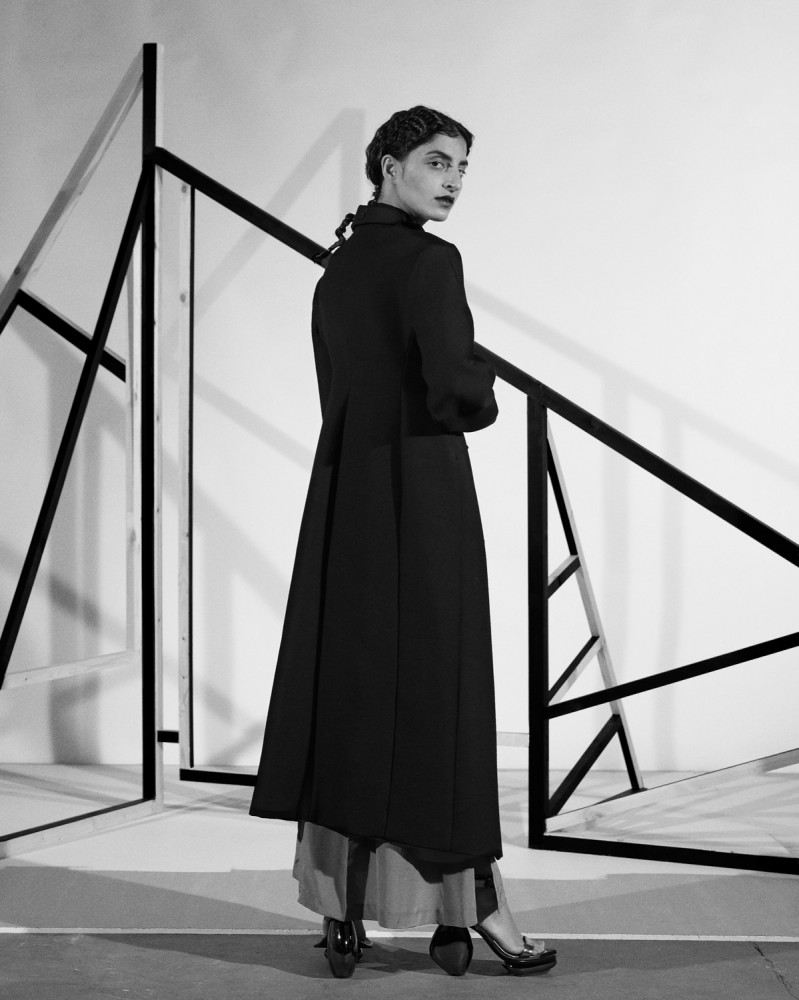









INTERVIEW
Rhys Thorpe
PHOTOGRAPHY Rhys Thorpe STYLING Marina German MAKEUP Philippe Miletto HAIR Stefano Mazzoleni SET DESIGN Jessica Morris CASTING Sarah Bunter STYLING ASSISTENT Olivia Kahlin PHOTO ASSISTENT Ibrahim Azab, Luca Trevisani SET DESIGN ASSISTENT Ranya El-Refeay MODEL Nassia Natsa @ Troy Agency SPECIAL THANKS TO Gas Productions CAMERA Leica S (Typ 007) with Vario-Elmar-S 30-90 f/5.6 ASPH.
It was pictures of the iconic, American dancer Martha Graham, that inspired Rhys Thorpe to produce ‘Primitive Mysteries’, a photo series where Nassia Natsa slips into the role of the paragon of modern dance. Using powerful dance poses, Thorpe captures unconventional beauty in expressive black and white.
How did you get into fashion photography?
When I first moved to London, with very little experience, I was lucky enough to work full time for a very good advertising photographer. The diversity of his work meant I was exposed to a broad range of visual styles and ideas, and I found I was drawn to referencing more and more fashion imagery. I began to shoot my own fashion projects, and fell in love with the process of building a picture and a story from scratch as part of a collaboration.
You have a style that is not necessarily considered commercial. Is that an advantage or disadvantage in your field?
Commercial clients buy into your style and it is applied to their context; but that can narrow down a photographer's market. However, if your style is too commercial, then you can miss out on certain types of client. I think advertising has such an ‘editorial’ feel at the moment, and clients are less inclined to align themselves with super polished commercial work; but it is important to produce work that feels right to you and offers something unique. I feel my work sits comfortably between the two worlds.
How important was it for you to be able to work without specifications that limited you?
Working without any particular constraints or specifications always leads to more creative and interesting results. It means you can respond to what’s happening during the shoot, and it becomes a real collaborative process that evolves as the imagery is being produced.
For the S magazine you photographed ‘Primitive Mysteries’ – a black and white series in a studio. What’s it about?
This project is based on a series of images of American dancer Martha Graham. Shooting in black and white meant we could focus on the movement and the incredible set design. It was also aesthetically more aligned with our starting reference point.
Nassia Natsa is a very special model. What is it you like about her?
Nassia is amazing. I have no interest in the traditional or popular female aesthetic of beauty in photography and the media. It’s not my style and it feels so irrelevant right now. Nassia has such a fascinating and unusual look, but more importantly was really engaged in the project and understood what we were trying to achieve and why. If a model can respond in this way, then how they look becomes secondary.
You used Leica’s medium format S camera. How did the camera work for you?
The Leica S was great to work with. I move around a lot when shooting, so I like a good quick auto-focus, and the file size means I can crop and rotate as much as I want.
What’s your next personal project?
I am currently working on a still life project inspired by the work of Francis Alys. The principle ideas behind his work are so effortless, but the results are epic.